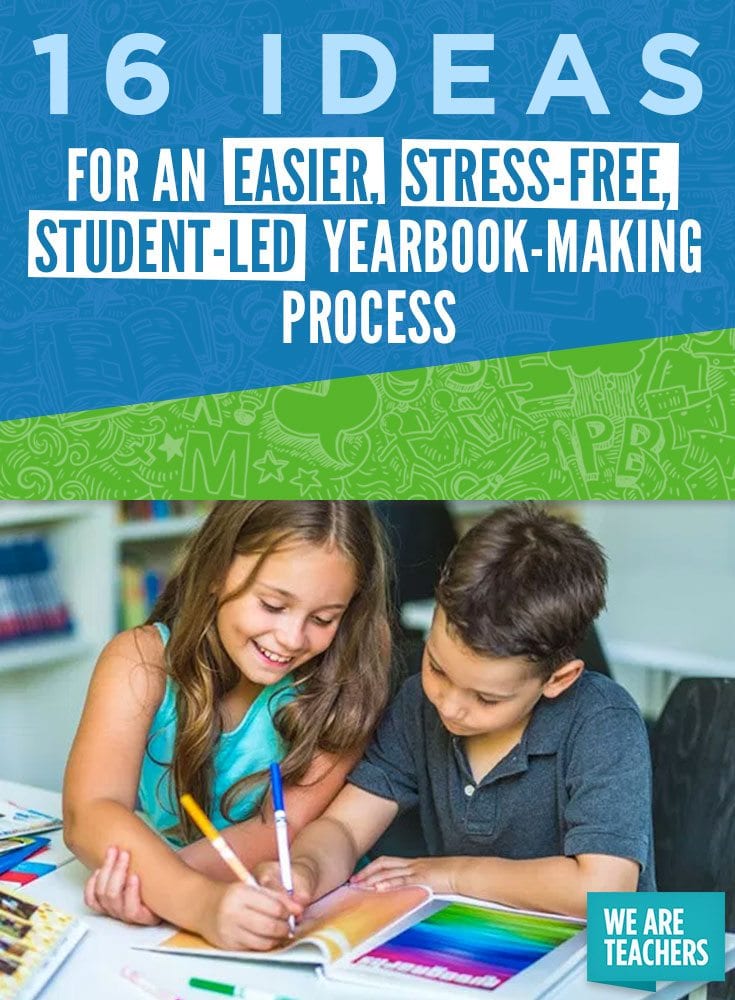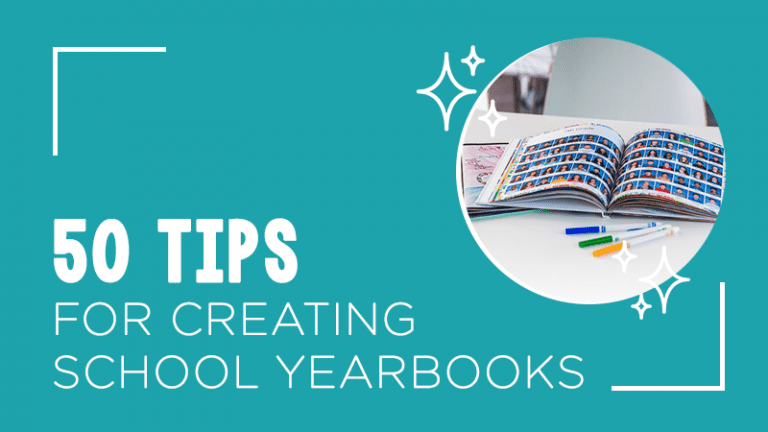Are you in charge of yearbook this year? Congratulations! Yearbooks are such a cherished, important part of capturing school memories. Below, veteran yearbook leaders share their best advice for managing the yearbook process.
1. Let the students lead.
I think it is absolutely critical for any yearbook group to be student-led with staff support, not the other way around. As an adult, it’s easy to pick up the slack, but that takes the process out of kids’ hands where it belongs. A stunningly beautiful yearbook is, of course, our goal, but a meaningful and fun process will be far more memorable in the end. –Sarah Keezing Gay
2. Take the time to prep properly.
Students will want to jump right in, but take some time to do team-building, teaching about mission statements, and understanding the overall vision. More direction and cohesion before you get into the content will really help the process overall. –Jess Atkinson
3. Try an icebreaker to kick off the process.
When I was yearbook advisor, I always began the school year by having the kids start taking candid pictures right away. I would give students about 15 minutes, and they would enthusiastically roam the hallways snapping away. Then, as we viewed the photos, we’d all discuss the pictures and talk about possible captions. This was a great way to start building a bond with the students. –Jan Hudson
4. Make it an extracurricular students want to be a part of.
If you want to get students involved but don’t have a designated class, organize it as an extracurricular group. I run a yearbook group that meets weekly, and students can sign up to work on the areas or sections they choose. Then, at the beginning of the year, we’ll hold training sessions for students so they can come in and learn the tools they need. –Sarah Keezing Gay
5. Study other yearbooks before you dive in.
This is such an important process. Take time to look through old yearbooks, and ask questions. What types of layouts do you want to do? How do you want to organize overage? What kind of new content do you want to share? Ask students these questions, and encourage them to think about the entire process. –Jess Atkinson
6. Don’t be afraid to use (or nag) the resources you have.
Use your yearbook company to help and ask questions. They should be one of your biggest supporters—that’s what they’re there for. –Katie Brown
7. Recruit student photographers.
Just because a student isn’t interested in yearbook doesn’t mean they can’t help in some way. Recruit students who are interested in photography even if they’re not interested in joining yearbook. They might just like taking photos or posting on Instagram a lot. I promise you will always need more photos! –Jess Atkinson
8. Set up a creative space.
I made the yearbook room a fun place to be with bright and colorful posters and funky décor. We always had music playing, which made for a relaxed work environment. –Jan Hudson
9. Tell stories.
Photos are great, but don’t forget to use them as tools to tell the stories of your school. Have students talk to or interview staff or students. Having authentic and real stories to go along with the photos will really make it a better product. –Jess Atkinson
10. Target parent groups for their help.
Ask parent booster organizations for their support in creating photos, write-ups, or information for their section. For instance, if you have parent groups that support sports teams or drama clubs, ask for their photos. These groups will often have their own websites or group pages. This will also help bring a wider range of voices to the yearbook and save on work. –Sarah Keezing Gay
11. Always stay two steps ahead.
The hardest part is keeping up with enough work for kids to do on their own. Remember that students can spend a good amount of time on writing up names of team pictures, making sure all the names are spelled correctly and that everyone is listed. Just have the work prepped and ready to make the best use of time. –Annie Brtitschge
12. Bring in a guest speaker.
Ask the local newspaper editor, photographer, or a staff member if they would consider a couple of mentor sessions. They can talk to the kids about photos and what makes a picture usable. –Kelly Brown
13. Get the entire school involved by offering rewards.
Our teachers get their classrooms involved by inviting students to help with tasks and challenges we give. And for this, competition works really well! We offer rewards for the best cover, opening message, best page to capture a classroom project, and more. We don’t ask the teacher to give up instructional time. Rather, we give basic activities like writing challenges that they can incorporate into their curriculum. –Sarah Keezing Gay
14. Do not…absolutely do not…leave proofreading to the end.
It’s easy to put this off until the very end when the book is about to go to the printer, but you can have more mistakes this way. Try to put a process in place so that you have multiple people proofreading along the way. If you can streamline and focus your process, you’ll have more time to do it thoroughly. –Jess Atkinson
15. Leave the tracking up to your students.
It’s important to make sure all groups and students are represented as best as possible. Ask your students to track patterns, identify their peers who are over- or underrepresented, and guide you towards sources of images for students who don’t show up in as many event or group photos. –Sarah Keezing Gay
16. Take it one day at a time.
If it’s your first time doing yearbook, focus on getting through the first year, and don’t be too hard on yourself the first time around. I recommend following basic layouts similar to previous years while you get to know the process. There’s a big learning curve when you’re just getting started, so don’t overdo it. –Katie Brown
Remember Me offers an impressive set of tools to make your yearbook process seamless. Browse their themes and find out how they can help you.
Also, download the free “making memories” poster from Remember Me. Hang it in your classroom to encourage making memories. Learn more here.



